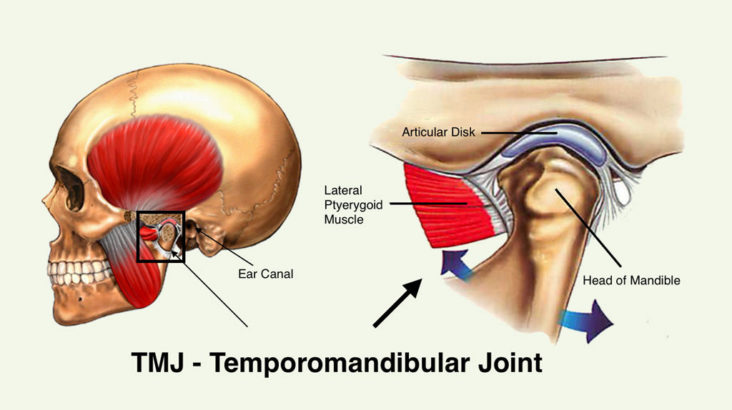Do you suffer from debilitating headaches, neck or facial pain? These can be signs and symptoms of a TMJ disorder. Do you experience cracking or popping in your jaw with opening or chewing? Do you find yourself clenching or even holding your breath during the day? Have you had sinus like pain which was non responsive to antibiotics? If so you may be suffering from a TMJ disorder.
It has been estimated that millions of men, women and children suffer from TMD (temporomandibular disorder). Symptoms of headache and facial pain are primary but patients may experience earache with clogging, ringing and hearing loss. In severe cases a dislodged disc in the TMJ can lock or block jaw movement. Other TMJ symptoms are grinding and clicking on opening and closing the jaw. In some cases dental procedures can irritate the TMJ and lead to stress and strain in the surrounding musculature and intra articular structures of the TMJ. Some patients experience clicking which is non painful but may eventually lead to a locking and painful TM joint. (See figure1)
One of the major causes of TMD relates to chronic bruxing. Bruxing is a grinding of the upper and lower teeth which causes a strain in the hard tissue (teeth) and hyperactivity of the masticatory muscles (the muscles we use to chew). These structures can give rise to pain in the face, head and neck.
Other issues involve TMJ joint laxity which causes the TMJ support ligaments to elongate ultimately causes disc displacement with (clicking and locking).

As women are most effected (80%), estrogen receptor in the TMJ play a large role in women’s experience of pain with clenching and grinding. This micro trauma to teeth and the TMJ proper can lead to breakdowns of teeth and articulate structures of the TM joint giving rise to headaches, facial and neck pain.
Other causes of pain can be traumatic falls involving the head and neck or direct trauma to the face and jaw. Dental work involving crown and bridge and tooth extraction or even dental cleanings can produce symptoms. Patients with missing teeth can lose proper structural support for the TMJ (temporomandibular joint).
Stress is a major feature producing a clenching and grinding habit. The effects of the habit produces a pain and spasm cycle in the head and neck which needs to be broken. Typically if this cycle is not broken increasing symptoms prevail and headache, facial pain and neck pain become more apparent and debilitating. This may necessitate a visit to the family doctor. If this doctor is astute and familiar with these symptoms, he or she would refer the patient to a dentist who understands this pathology.

What is the comprehensive treatment of this complex problem? Generally, this problem is the domain of the treating dentist, since the symptoms are broad in nature involving the face, head and neck joints and musculature structure. A comprehensive treatment generally involves a dentist who might order specialized X-rays and/or an MRI. An oral appliance or mouth guard may be necessary to decompress the TM joints and protect the teeth from damage due to bruxing. Appropriate medication such as muscle relaxants and anti inflammatory medication may help to decrease muscle spasm and inflammation.
A comprehensive treatment program often includes a physical therapy evaluation and treatment. This treatment includes soft tissue work and mobilization of the TMJ and masticating musculature. Posture of the mandible and head on neck is discussed and corrected as it directly involves the outcome of dental treatment in most cases. Much time is spent teaching patients relaxation techniques and non-clench strategies which is key to the success of treatment.
Schedule an appointment today to find out the best course of treatment for your particular needs.

